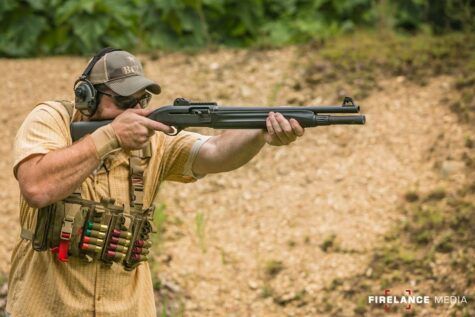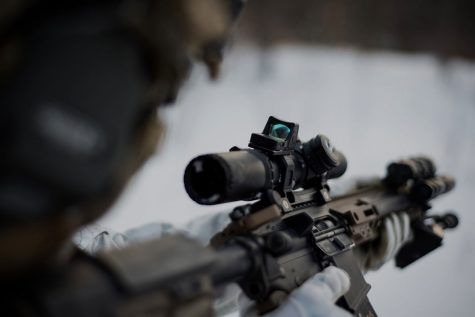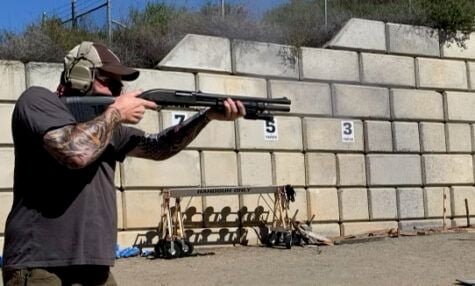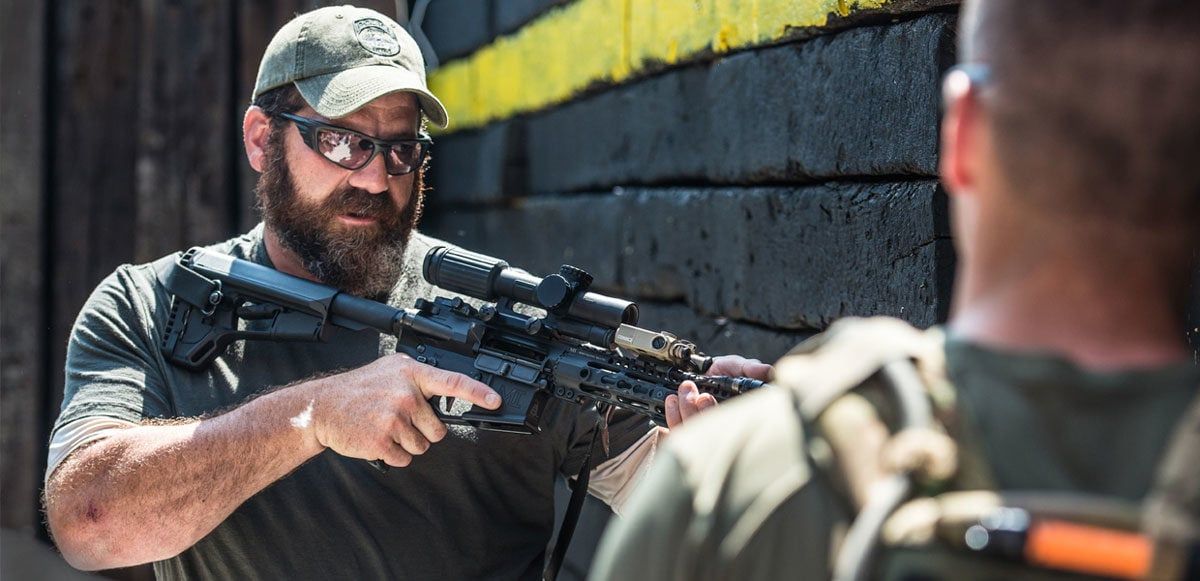
Steve “Yeti” Fisher of Sentinel Concepts is one of the most knowledgeable and sought-after trainers and experts on the AR-15 platform. We recently sat down with him to discuss his experiences with the AR-15, how new students should approach training, why a new shooter doesn’t necessarily need a super high-end rifle, and much more.
In case you missed part one of our interview where we discussed optic options for the AR platform, be sure to check that out here. To learn more about Steve and Sentinel Concepts, click here.
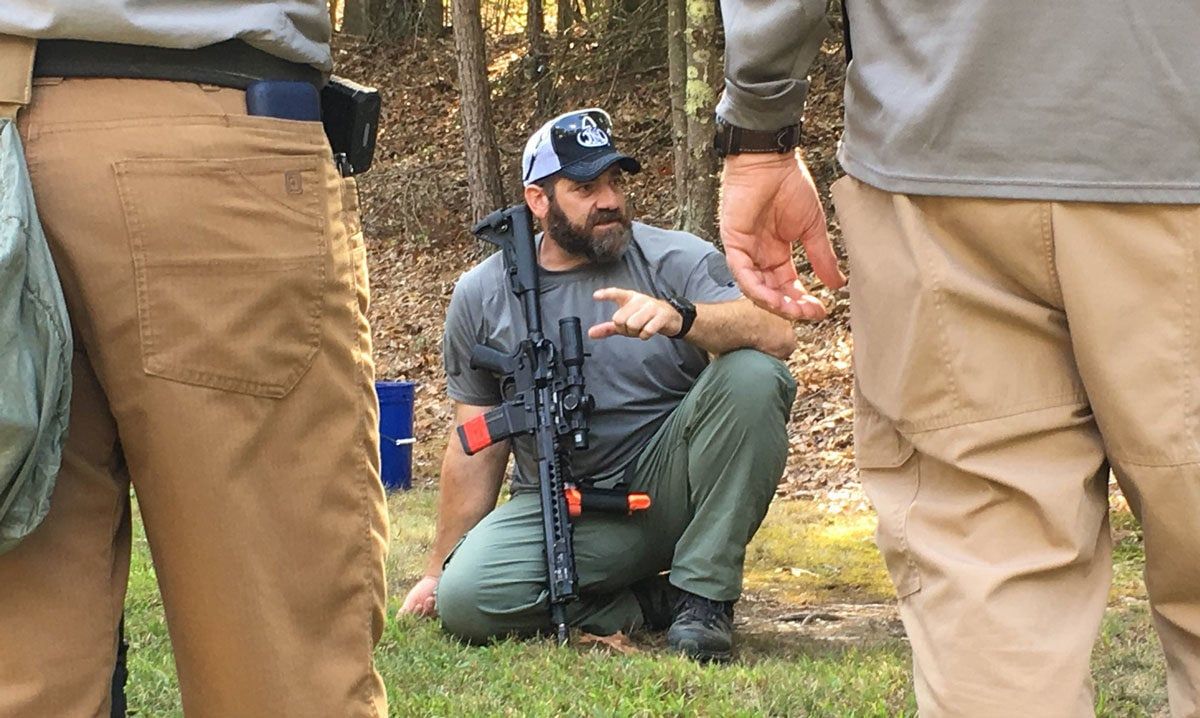
Q: Steve, thanks for taking the time to chat with us. For starters, what was your first experience with the AR platform?
Steve “Yeti” Fisher, Sentinel Concepts – My first exposure to the AR platform really came about in the late 1980s. The first AR pattern gun that I purchased was a Colt 20”. It was nothing fancy…just an HBAR, but I fell in love with the gun right away. That progressed on throughout my training career.
Q: Can you talk about what makes Sentinel Concepts special?
Steve “Yeti” Fisher, Sentinel Concepts – I’ll start off by saying that there’s nothing new. Let’s be real when we talk about training and firearms. There are practical applications of fundamentals that are better, cleaner, smoother, faster and more efficient.
Realistically, you are hard pressed to find a bad instructor right now inside industry within the crop of really good people there. For me, what sets it apart is that there is no fluff, no flash, there’s nothing fancy.
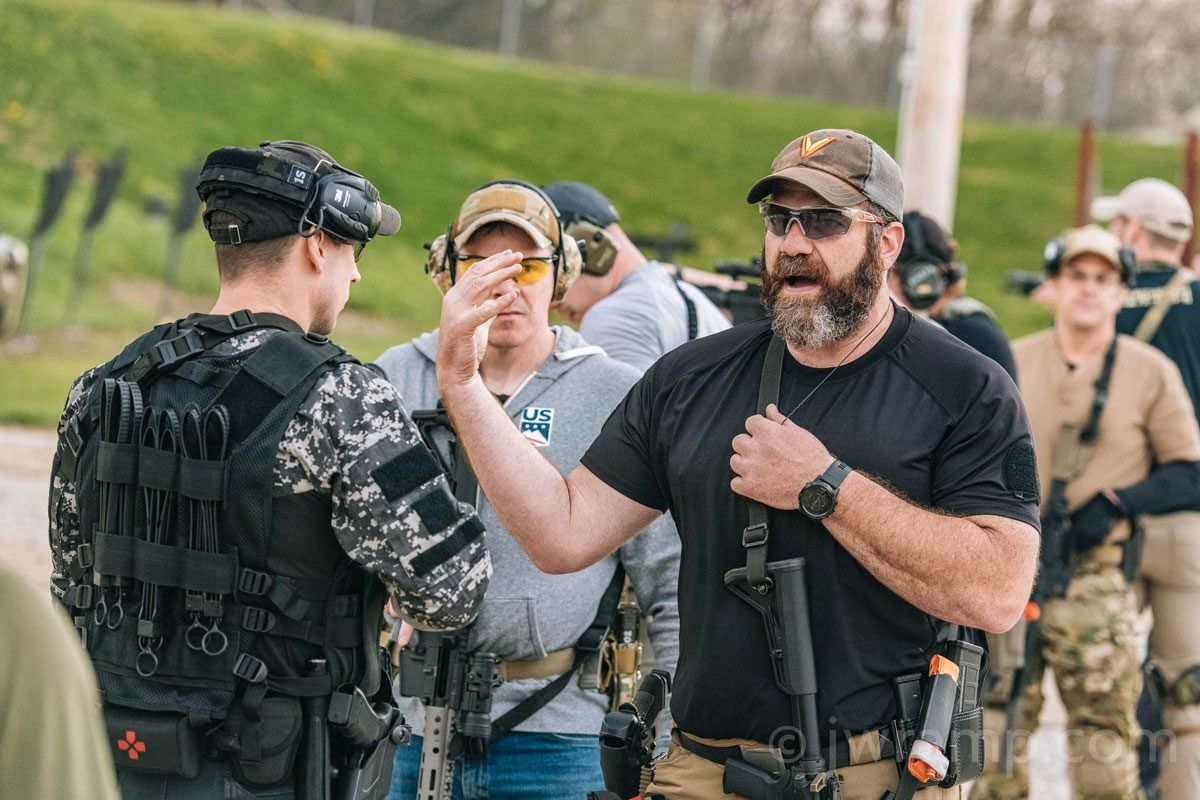
It’s straight fundamentals. It’s to get students to think, to develop processing of information based on what they’re given and find solutions to those problems. That’s nothing new either, but what sets it apart is that there is a heavy degree of accuracy standards…timed accuracy standards and positional stuff. Again, nothing that we’re looking at is crazy new but where I separate myself from some of the others is my workup and my use of slings with students…and more practical application of the carbine for pretty much 95 percent of the people that show up to my courses.
I don’t teach transition to pistols outside of that because we’re working on the carbine. If I have to teach you how to move a carbine out of the way to pull a gun out, you probably have other problems to deal with in your life. Unless it’s a law enforcement specific course, I don’t have to teach you some fancy way to move the carbine to release one control mechanism to grab another gun and pull it out of a holster…which you’ve done 100,000 times.
I’m not about that flash. I’m about delivering accuracy, delivering accuracy at speed, delivering accuracy at distance, and not just being a 10-yard-and-in assaulter, where everybody likes to play with the carbine. People like to live with that gun at 25-yards and in…and while, that’s relevant, the AR platform is capable of a lot more, and they should understand its capabilities…and their own.
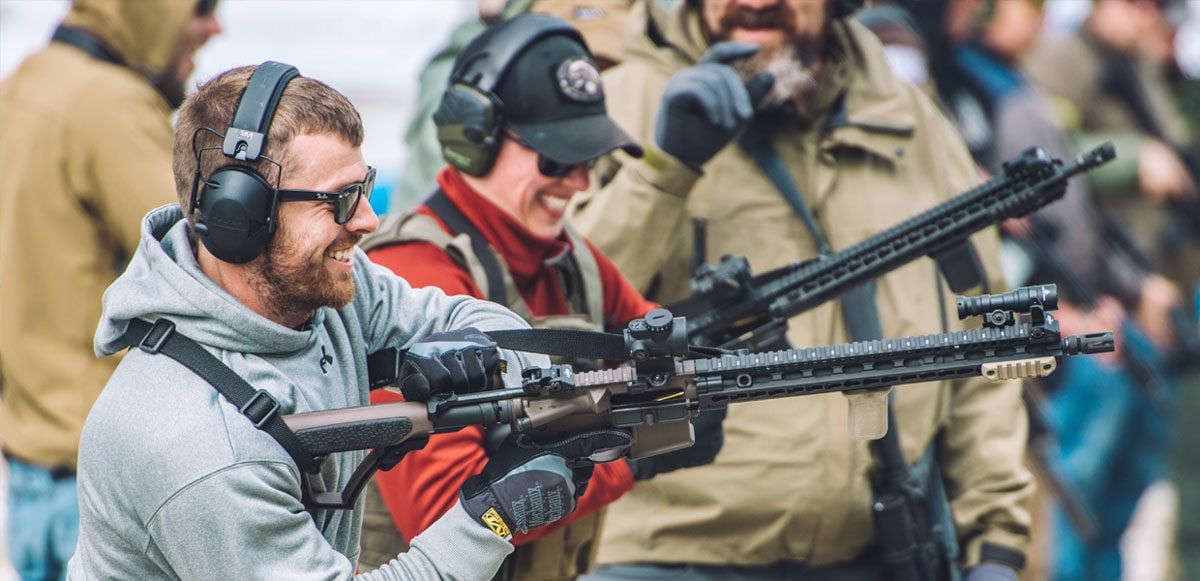
Q: Can you walk us through your carbine-specific course offerings?
Steve “Yeti” Fisher, Sentinel Concepts – That’s a very interesting topic. Going into the 2020 year, the Essential and Critical classes are no longer going to be offered. One format, one class. In the past few years, there has been too much of an overconfidence in shooter’s abilities and skills to come into what we could consider a Critical course. Most lack a severe understanding of weapons manipulation and the ability to deliver the accuracy with that gun in a time constraint accuracy measurement standard. That turns into a course of “here we go again, and we have to ratchet it back and make everybody a better shooter” before we can do the fun, cool kid stuff.
So, next years courses…there’s a Carbine Employment, or whatever it’s going to be called and there will be Practical Urban Carbine, plus the Low Light courses for carbine, and some Shooting on the Move courses that are more specific, isolated skills.
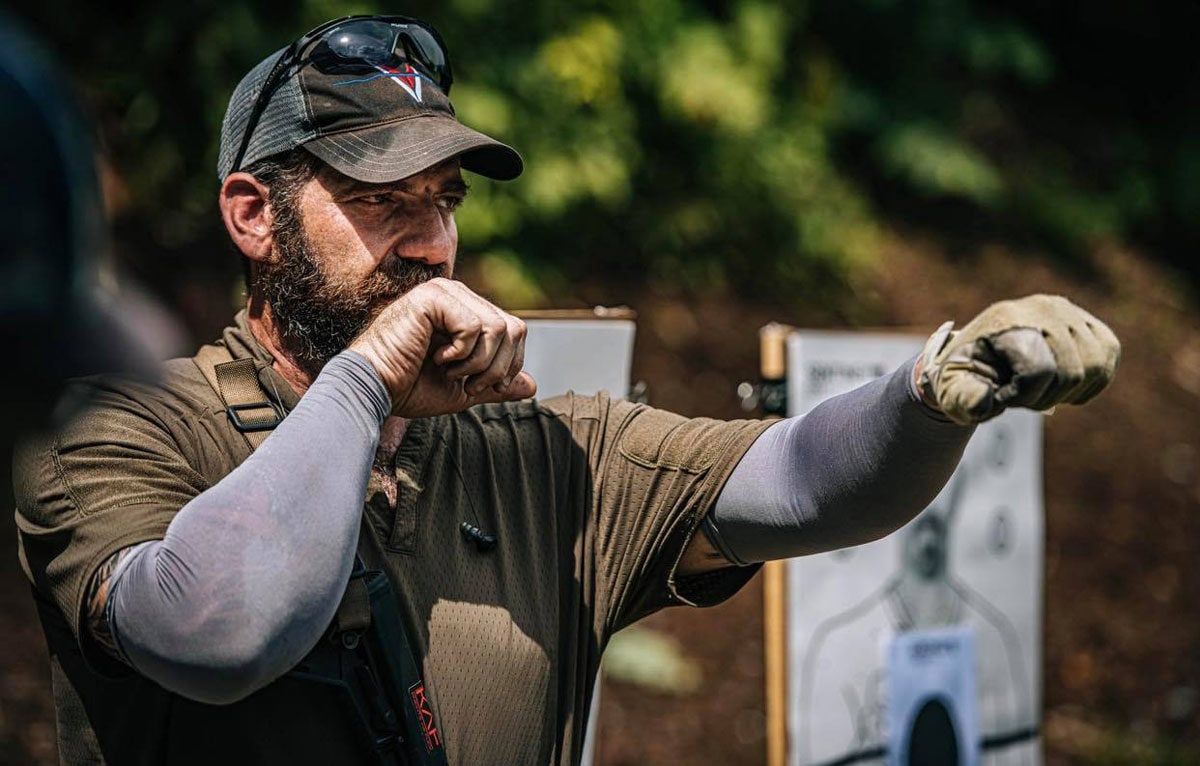
We’ll focus on proper carbine set up for the user, reloads, malfunctions and manipulations…it will be a fundamental course that ramps up as their skill sets do throughout the two or three days.
Steve “Yeti” Fisher on Sentinel Concepts’s Practical Urban Carbine Course
Steve “Yeti” Fisher, Sentinel Concepts – The Practical Urban Carbine came about after I saw students having a really hard time shooting carbines at 100 and 200 yards. There was an inability to group, based on their ammo and just their ability to understand the the practical fundamentals of shooting a gun. So, I went back through and pulled some notes and material from some previous stuff that I had done and taught, and I developed the Practical Urban Carbine Course, which is basically a 0-300 yard distance rifle course.
That class has been a flagship and it has been well received by everyone who has taken it…not only do we develop a lot of data about drops and holds within those distances, because 50 does not equal 200…all these guns, ammo, barrel length, twist…everything is completely different and they all have their own recipe. This is a fact-finding course for students to find out “hey, what is my hold at 175 yards with this gun with a 200 yard zero…or a 50 yard zero, with a 1.93” height optic mount with a red-dot and 55-grain ammo vs. 77 or 75?”
So, it’s a lot of information passed down. Then beyond that, it dives into some optic specific issues…and how to properly use positional shooting in and around barriers and barricades.
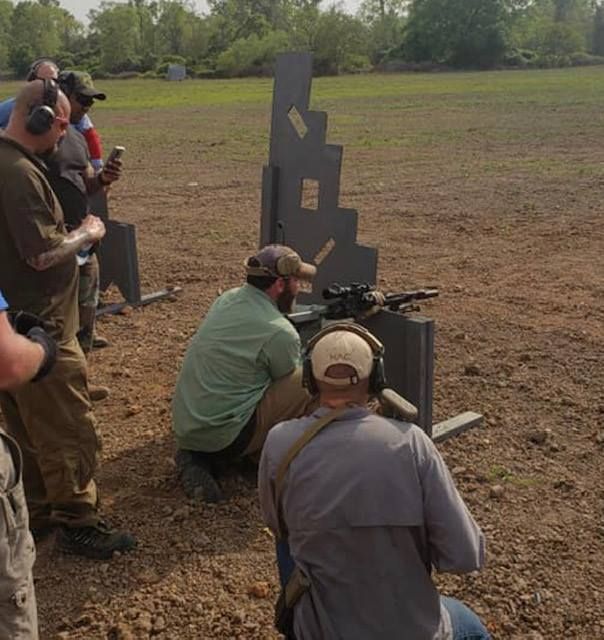
Q: I’ve heard so many good things about your classes…that said, what does it mean to you to be a good student in one of your courses?
Steve “Yeti” Fisher, Sentinel Concepts – Come in with a clear mind. Most of us don’t care what previous instructor taught you or told you. If that’s the case, go back to them. You paid us an amount of money to download our information, our brains and our experiences so you can take things away from it. So, come with an open mind and clear head. Have your gear squared away and read the class lists. Show up with magazines loaded and show up with a zeroed rifle. Even though there are going to be zero confirmations, you should show up with a zeroed gun….that’s one of my biggest pet peeves. I’d say take copious notes, but most important – ask the why’s.
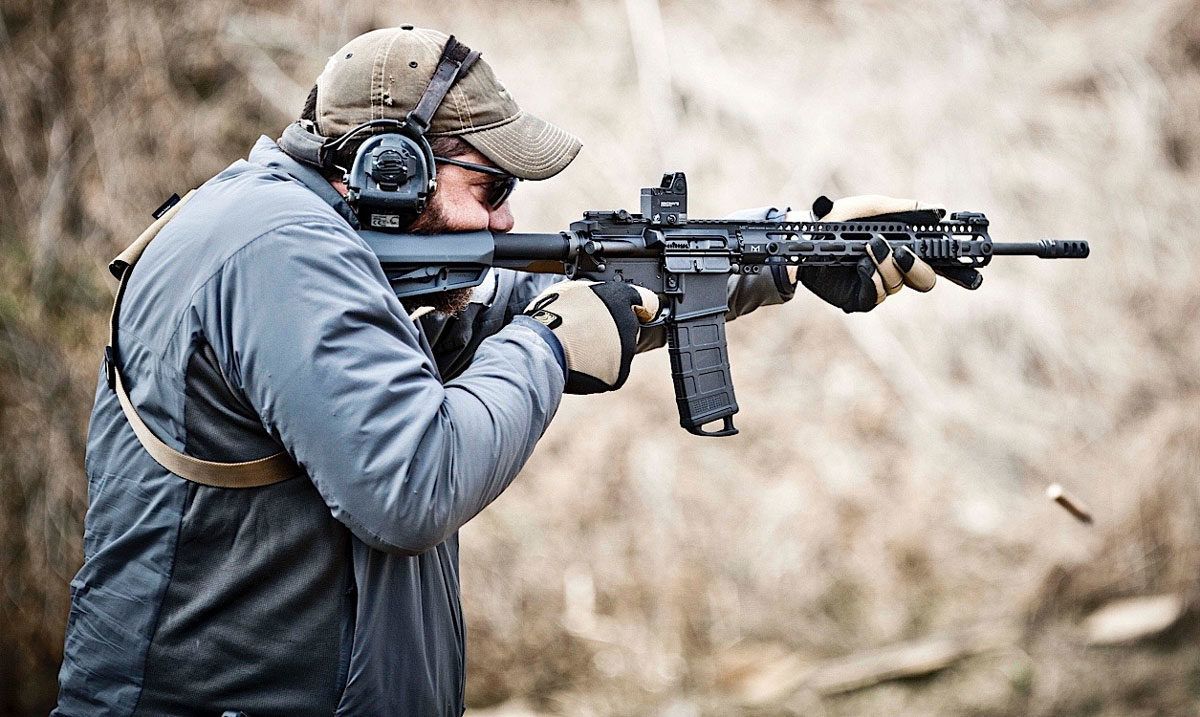
Q: Are there common mistakes you see that we should be aware of?
Steve “Yeti” Fisher, Sentinel Concepts – Single point slings are still a thing. They’re not really designed to hold a modern, 16” barreled, 9 pound carbine around your neck all day. They don’t offer physical support to the gun for positional shooting, which is problematic when you need it.
On top of that, skimping on optics. You will see a lot of people that bought a $200 dollar low power optic because it was affordable. That’s great…nothing wrong with that from an initial learning standpoint, but if that piece of equipment holds you back or is giving you problems…it’s going to hurt you in your learning over the next two, three days…or however long the course is. The other thing that students should really be prepared for is to know what their adjustments are on their optics. I see it in every course.
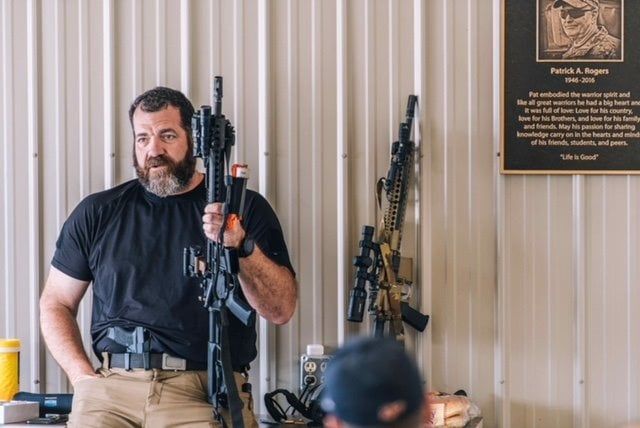
Steve “Yeti” Fisher on Equipment and Gear Set Up
As far as other things, there is of course proper equipment and proper gear setup. While we can deal with that at the course and make changes on the fly without disrupting things, because that’s really part of the information base…understanding the setup and making it beneficial to you that you may not have seen that we may see. So, that’s normal.
As far as guns, if we’re comparing them to tools, you don’t need the Snap-On Tools version, but you should at least have a gun comparable to Harbor Freight. That way you’ll have a decent gun that will survive the one or two courses that you’ll take…the gun will probably last the 5,000 rounds or so you’ll shoot over the course of six years or so.
They can still learn from that gun…and while it isn’t perfect by a lot of other standards, if it works and it’s reliable during the course and it’s fed good ammo and magazines, we can work with it. I’m not necessarily worried about what the student shows up with as long as we can make adjustments, fix it and tune it up for them…and if not, we can loan them one of our guns. If someone has a problem or they feel that they don’t have a gun that is good enough…ask the instructor. We generally have loaner rifles available.
Q: Aside from the guns themselves, are there issues you see with ammo?
Certainly don’t skimp on ammo and don’t skimp on mags. For years and years, Tula, Wolf…lacquer-cased stuff was problematic in a lot of guns. The lacquer would cook off as the guns heated up. It would gum up the guns, and they would stop working. Thankfully, quality ammunition is available today at a reasonably good price.
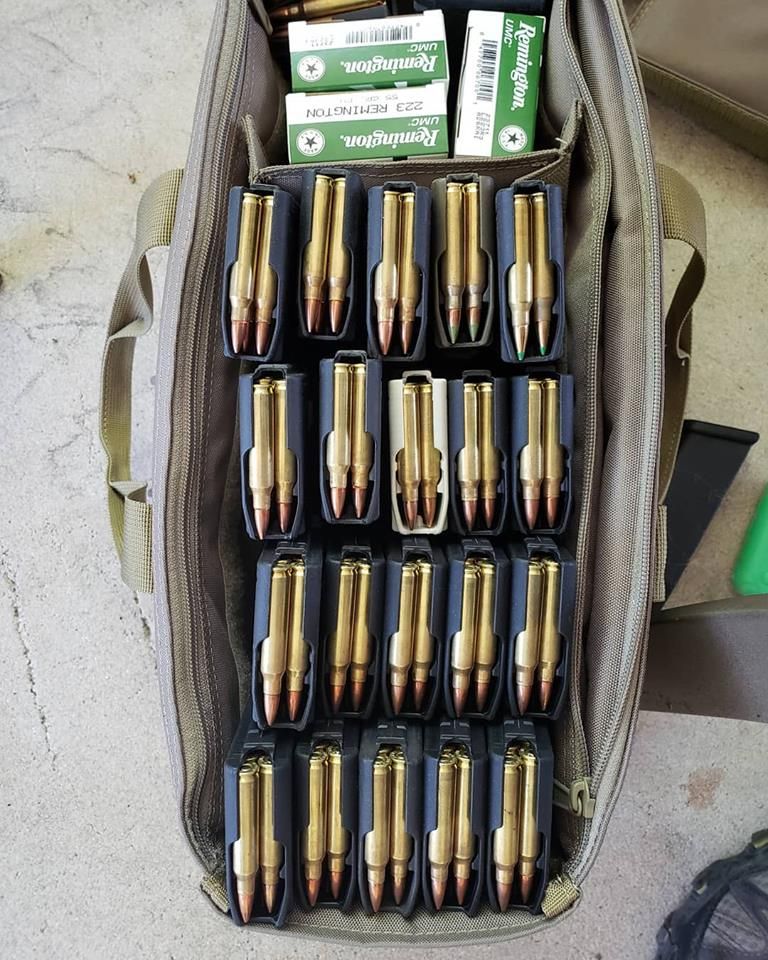
Surprisingly enough, I see a lot of students show up with Wolf Gold and its been accurate and it runs fine in their guns and its been consistently a very accurate load for them for what we are accomplishing inside of most courses. I would tell them to pay a little bit more for a more quality, accurate round so that they can figure out the variables if it’s the gun, the ammo, or human error in their accuracy. You may have a 2-MOA gun but if you feed it 4-MOA ammunition and you’re a 6-MOA shooter, you have a 12-MOA solution.
Q: The internet can be great, but there is also a lot of misinformation out there. I’ve witnessed Steve “Yeti” Fisher be a staunch defender of actual facts more than a few times online. Can you talk about where folks should go to get good information?
Steve “Yeti” Fisher, Sentinel Concepts – Thats the beauty of the internet. Everybody has a voice without recourse. Anyone can chime in. Sometimes there is value added, but often times there is not. But there are resources out there that are phenomenal. Primary & Secondary is one of them. There’s a wealth of information from dudes there like Ash Hess, Jared Reston, Chuck Pressburg…there’s so much good information out there from solid individuals who are peers of mine.
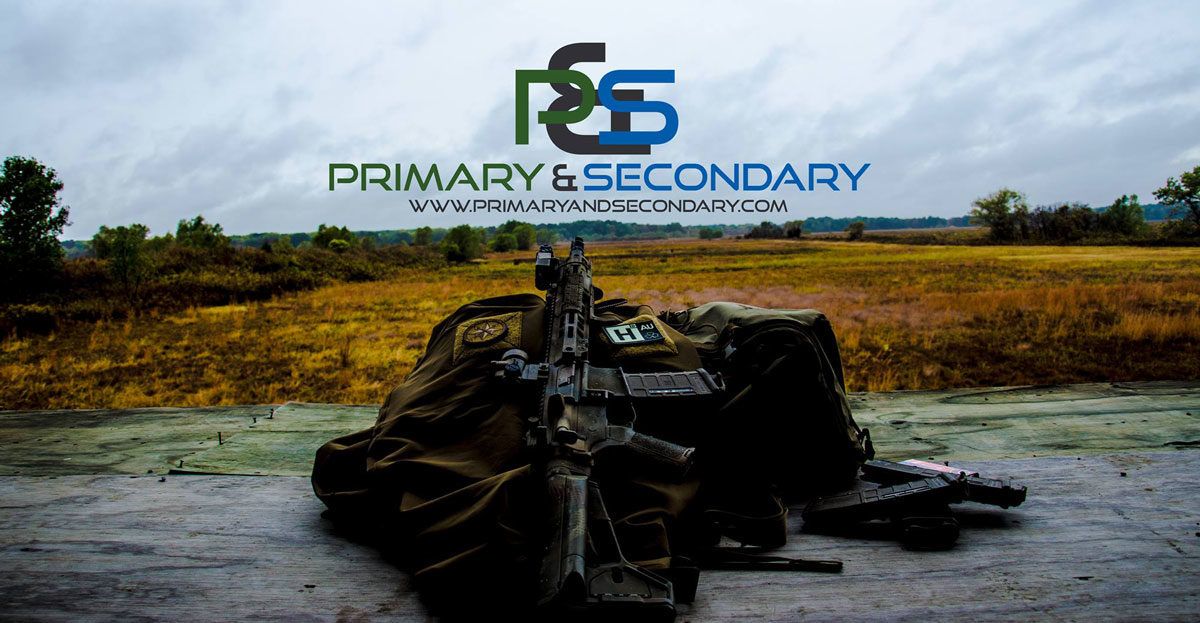
Even in the 3-gun community there is a wealth of knowledge about the AR platform. They’ve figured out a lot of stuff about those guns to make them run at the very ragged edge to have them be the softest, fastest shooting guns that they can combine. If that’s you’re thing, that’s great. There is some amazing information out there on those things.
That said, the best sources of information out there are courses. They are hands-on, they are factual…you get to see the guns working in different environmental conditions. You get to see different optics. The other thing that’s great is that the dudes there are also often very outgoing about their “why’s” of either why they built that gun or chose that gun. That goes a long way for a lot of people who may show up to a course with a bone stock rifle, and there’s a guy down there with the latest, greatest Knights, FN, Sons of Liberty or whatever it is.
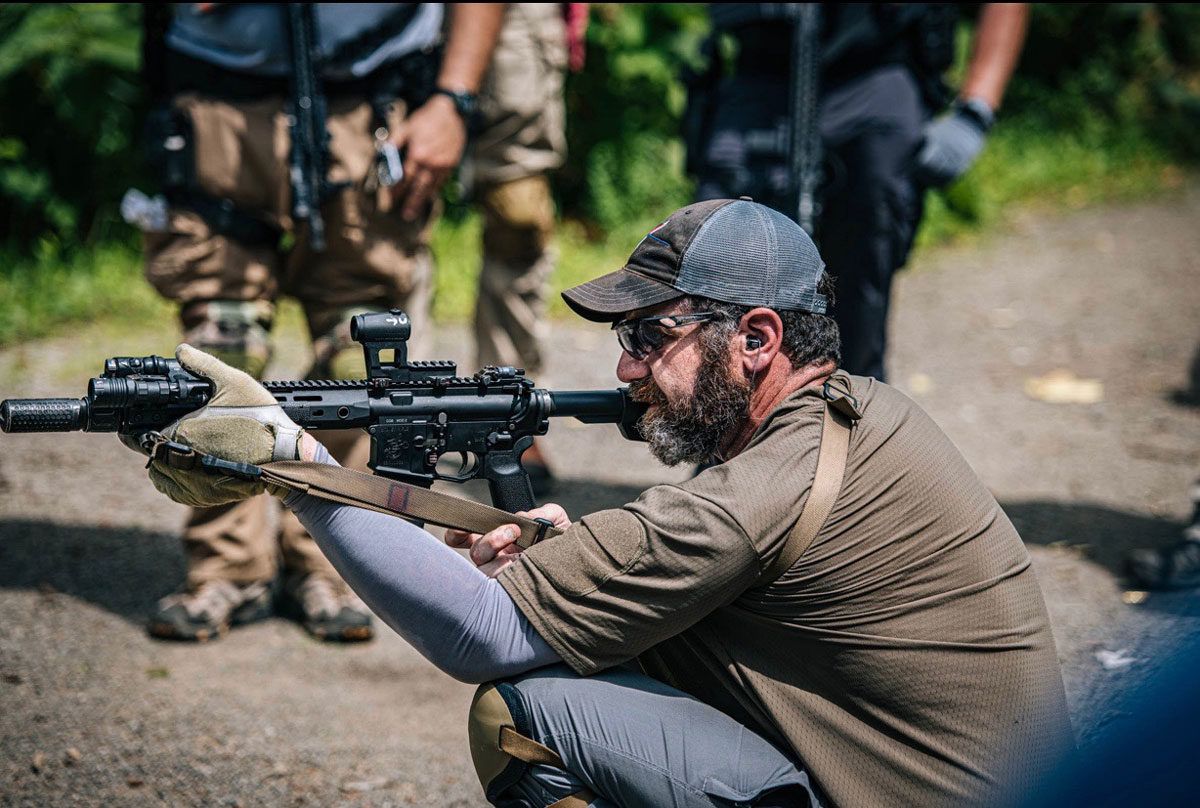
The courses are just such a wealth of knowledge, and one of the best things someone can do realistically for that information is to scour the internet for After Action Reports from classes.
Q: When it comes to building an AR, any advice on what we should be considering?
Steve “Yeti” Fisher, Sentinel Concepts – Needs vs. wants, skills vs. desire…without breaking the bank for the family. People have lives…they have mortgages, kids, school, daycare. To look at AR builds today from where they were at in the 90s – we have much more. We have more parts, better parts. We’ve had some great armorers available to us for a long time. Unfortunately we just lost Will Larson. Will was one of the most amazing resources of information for AR-15s…than any five people I’ve known. So, what I’d say is take a good armorer’s course.
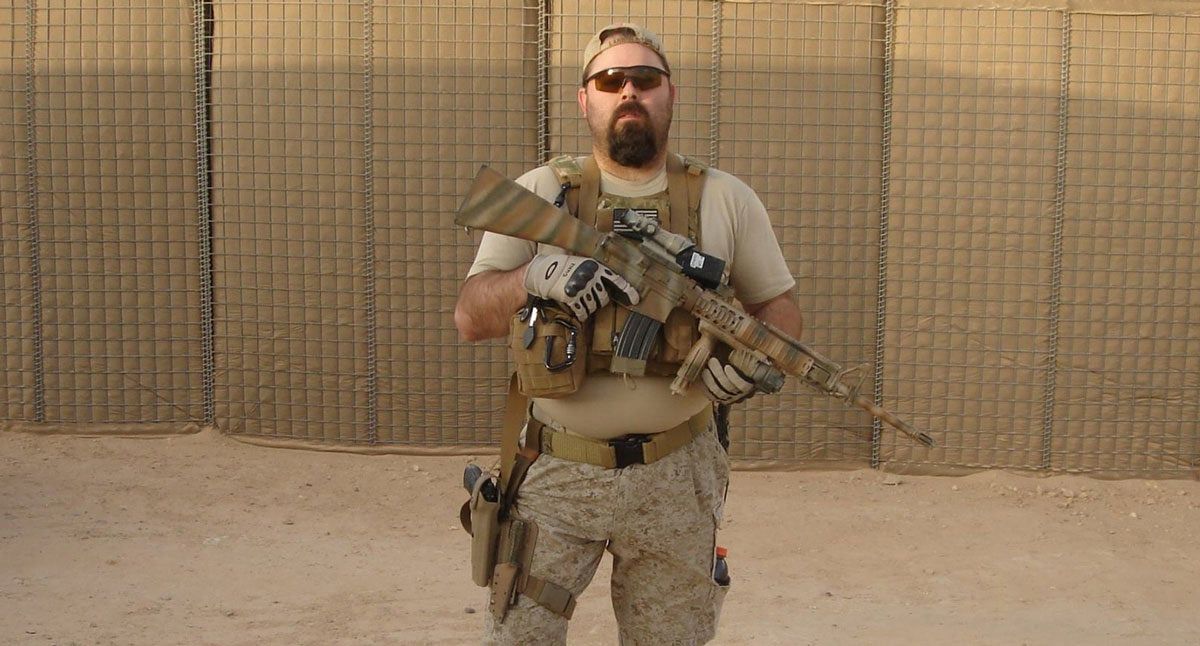
Get into one and understand the intricacies…understand the inner workings of the gun. Learn what works and what doesn’t work. Get into the “whys”..then take that information and and use it to help you build a gun you can fit into your budget. Then shoot it and enjoy it.
There is absolutely nothing wrong with a good, home built gun today. People will respond that “hey, it’s not duty use.” Well, hey bro, if you’ve got 3.5 kids, a picket fence, a wife who works a job, if you can scrape together enough money to build a decent quality gun and some money to take a course later on in the year, well…I will never berate or belittle someone for doing that — ever. They don’t necessarily need a quote/unquote a “duty capable gun” that’s going to ride around in the rack of a cruiser 12-14 hour shifts.
Steve “Yeti” Fisher – “The beauty though, is you built it”
That said, in the same price points, there are a lot of quality guns out there that you can buy if you don’t want to build. BCM, FN, Midwest, Sons of Liberty, Sionics, Knight’s…I mean, depending on what your price point is, it’s all available. The days of the Windham, Bushmaster, DPMS fiasco guns that were problematic for years…while they’re still there, we rarely see them in courses.
We’ll see builds from Aero Precision with somebody else’s’ pieces and parts put together, and those are fine…they work. But for the same price point, you could also buy a manufactured, quality gun that has a warranty, etc. The beauty though, is you built it. You understood how to put it together, and it’s yours…and that’s one of the best things about the platform – it’s the “tactical dress-up Barbie” of the gun industry. If you don’t like the configuration today, you can change it tomorrow.
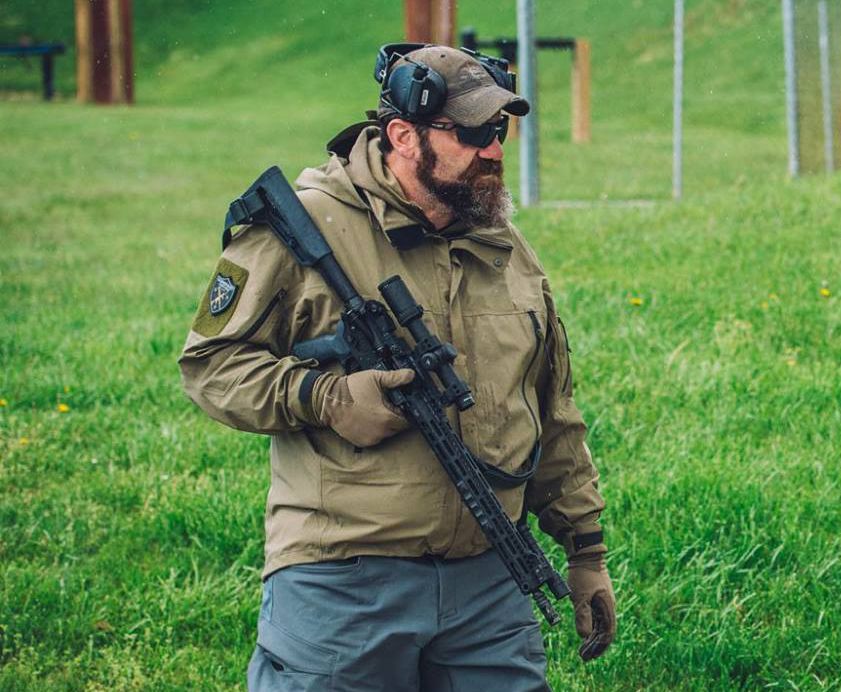
Q: As we wrap, are there things that we don’t think about enough? Are there things that you are not asked about that you wish you would be?
Steve “Yeti” Fisher, Sentinel Concepts – This is a tricky question and I like it because there are so many little things that don’t get asked that always come up or occur. I’d say what people should look at is the maintenance level of the gun as far as buffer springs, buffer tubes and their weights. That’s common knowledge to some, but others…not so much. They just trust what’s in the gun. Again, something like this is why it’s a good idea for someone to think about taking an armorer’s course so that they can really understand the workings of what’s going on.
I think the other thing is ammunition selection, barrel twist and barrel length. Realistically, 5.56 should not start at 55. It should start at 62 and work its way up. For the average shooter, 55-grain blaster ammo is great at 50 yards and in. For everything else, they should be shooting a better quality round to maximize their performance and terminal performance.
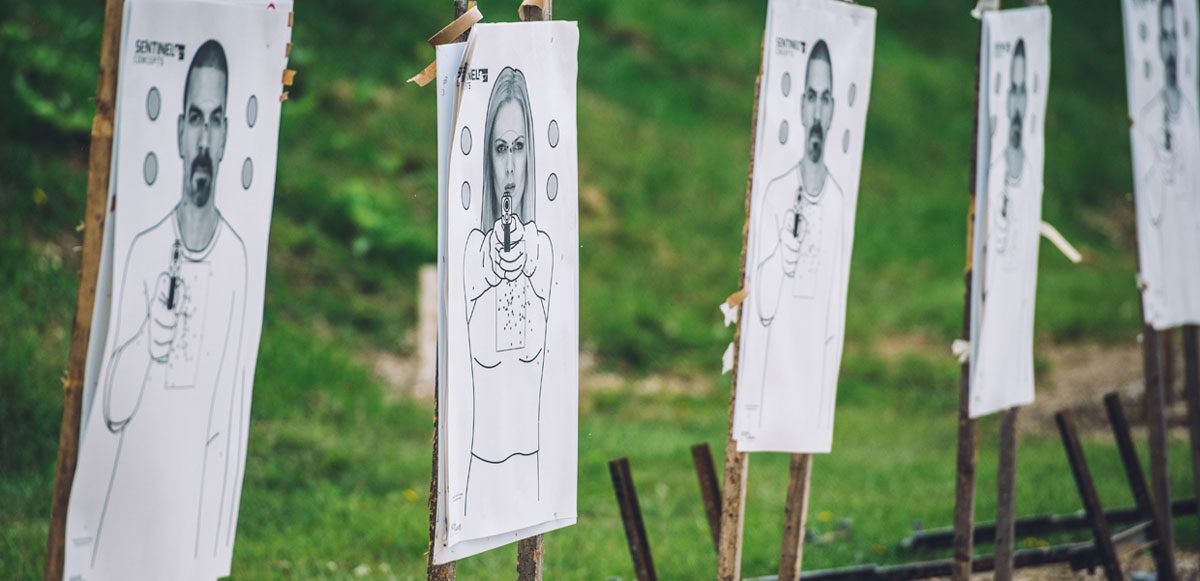
Q: Not to toss around the word “mindset” , but are there things that we should be thinking more about in that area?
Steve “Yeti” Fisher, Sentinel Concepts – People are too locked in to the thought process that “the only time this gun is going to come out is at the range and/or if someone breaks into my home.” We’ve seen in recent years, natural disasters, riots, all sorts of natural and man-made issues that have required the employment of these guns by the “Joe Citizen” public.
They are missing out in regards to their understanding of the gun, its capabilities, and they fail to look around at their environment and of where this gun may be used, and how. I say this in regards to lighting conditions and weapon lights, as well as other ancillary items…they need to take a hard look at the gun, but they also need to take a harder look at the world around them, and what the potential use of that gun might be outside of the home.
###
A big thanks to Steve for taking the time to chat with us. To learn more about Steve “Yeti” Fisher and Sentinel Concepts, please visit Sentinel Concepts on their website.



